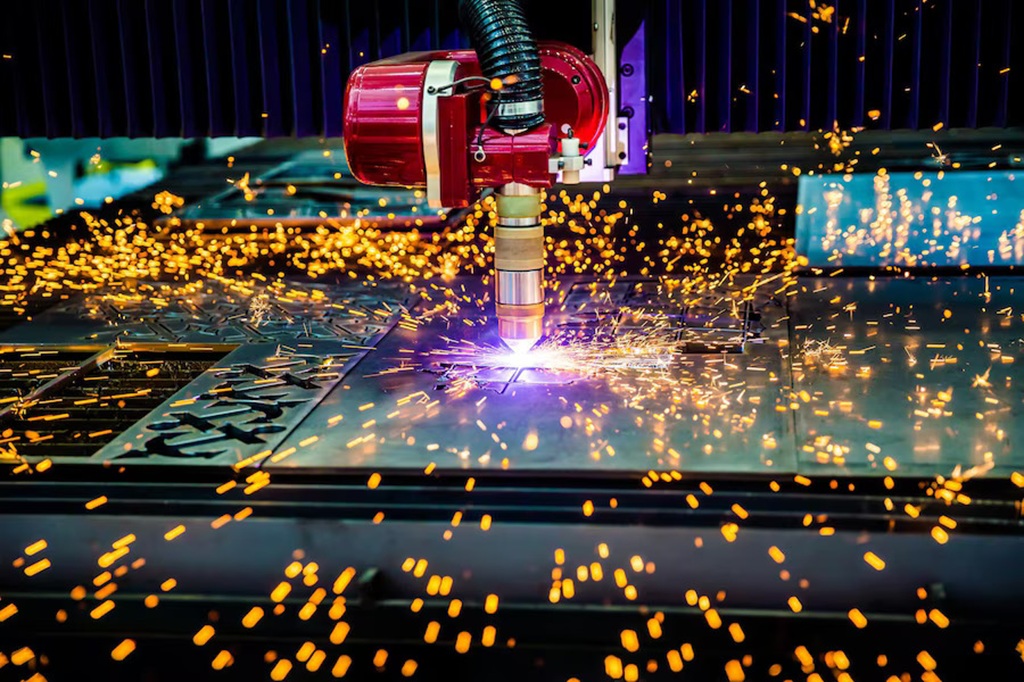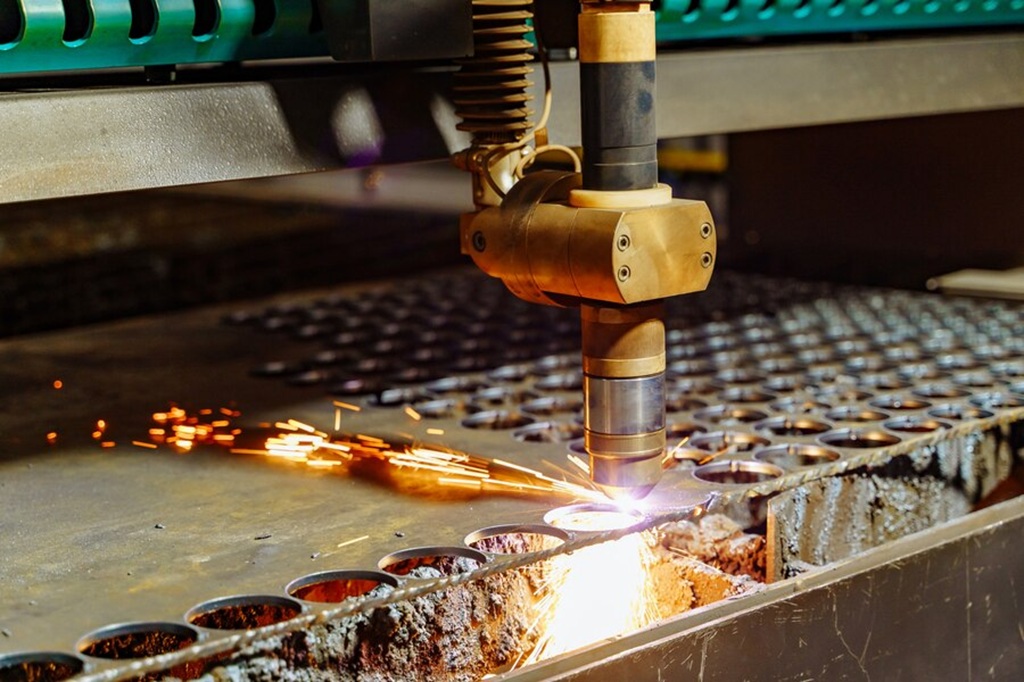Inconel, a family of nickel-chromium-based superalloys, is known for its incredible heat resistance, corrosion protection, and strength. These properties make it a go-to material in aerospace, chemical, and energy industries, especially for high-temperature environments. However, cutting this durable alloy requires specialized techniques, and plasma cutting has emerged as one of the most efficient and precise methods. This article dives deep into the nuances of plasma cutting Inconel, exploring best practices, tools, and challenges to ensure seamless fabrication processes. But first, let’s set the stage with an essential understanding of Inconel and why plasma cutting is a game-changer for this material.
If you’re looking to explore cutting-edge insights into materials and techniques, you can always explore Thenewargument.
Understanding Inconel: The Superalloy for Extreme Environments
Inconel stands out as a high-performance alloy, designed to thrive where other metals fail. Its resistance to oxidation and creep (slow deformation under stress) at elevated temperatures has made it indispensable in industries like aerospace for jet engines, gas turbines, and even rocket components. But here’s the catch: its strength is both its advantage and challenge. Machining or cutting Inconel is no walk in the park. Traditional methods like sawing or grinding struggle due to the material’s toughness and work-hardening characteristics.
Why Inconel Is Tough to Cut
- High Strength: Inconel retains its strength even under extreme heat, making conventional cutting tools ineffective.
- Work Hardening: The alloy hardens rapidly under heat and stress, causing wear on tools and increasing cutting difficulty.
- Thermal Conductivity: Inconel has low thermal conductivity, meaning heat builds up quickly in cutting zones, further complicating machining.
Given these challenges, plasma cutting emerges as a reliable option. But how does it compare to other cutting methods?
Plasma Cutting vs. Other Methods for Inconel
When cutting tough metals like Inconel, choosing the right method can make all the difference in terms of efficiency and precision. Many professionals debate: is a plasma cutter better than a torch? The answer largely depends on the material, application, and desired results.
Plasma Cutting: A High-Tech Solution
Plasma cutting leverages an electrically conductive gas (plasma) to cut through metals. Here’s why it works exceptionally well for Inconel:
- Precision: Plasma cutters deliver cleaner cuts with minimal edge distortion, even on thick Inconel plates.
- Speed: Compared to mechanical sawing or grinding, plasma cutting is significantly faster.
- Heat Control: Advanced plasma cutters are designed to manage heat input effectively, reducing the risk of warping or work hardening.
Oxy-Fuel Torch Cutting
While oxy-fuel cutting is excellent for thick, softer metals like steel, it struggles with high-melting-point materials like Inconel. The torch’s high-temperature flame lacks the precision needed for superalloys and often leads to material damage.
Waterjet Cutting
Waterjet cutting is another popular choice, offering precision without introducing heat. However, it is generally slower and more expensive than plasma cutting, especially for high-volume applications.
For most high-temperature applications requiring Inconel, plasma cutting strikes the perfect balance between precision, speed, and cost-efficiency.
The Science Behind Plasma Cutting Inconel
Plasma cutting works by sending an electrical arc through a gas like nitrogen, argon, or oxygen. The gas is ionized to create plasma, a state of matter so hot (up to 30,000°F) that it can melt through Inconel with ease. The molten material is blown away using high-speed gas, leaving behind clean cuts. Understanding the science is key to mastering the process.
Selecting the Right Plasma Cutter
- Amperage: High-amperage plasma cutters are essential for thick Inconel. A machine with at least 100 amps is recommended for industrial applications.
- Gas Selection: Argon-hydrogen mixtures are ideal for cutting nickel-based alloys like Inconel, as they produce hotter and more efficient plasma.
- Nozzle Design: Advanced nozzles help maintain consistent plasma flow and precise cuts.
Controlling Heat Input
Inconel’s tendency to harden under heat means you need to minimize thermal input. Modern plasma cutters come with features like pulsed arc control, which ensures steady heat without causing material deformation.
Tips for Efficient Plasma Cutting of Inconel
Cutting Inconel isn’t just about owning the right plasma cutter. The process requires skill, preparation, and a few insider tips to ensure the best results.
Pre-Cutting Preparation
- Clean the Surface: Dirt or oxidation can interfere with the plasma arc, so ensure the Inconel surface is clean.
- Secure Clamping: Prevent vibrations during cutting by firmly clamping the material.
- Plan the Path: Mapping out the cutting route in advance reduces errors and waste.
Cutting Best Practices
- Use the Right Speed: Cutting too fast or slow can affect edge quality. Experiment with speeds to find the sweet spot for your specific Inconel grade.
- Focus on Edge Quality: Check for dross (residual slag) after cutting. Adjust amperage and speed as needed to minimize cleanup.
- Wear Protective Gear: Plasma cutting generates UV radiation and hot sparks, so safety is paramount.
Applications of Plasma-Cut Inconel
Plasma-cut Inconel plays a pivotal role in industries where performance under extreme conditions is non-negotiable. Here are some key applications:
Aerospace
Inconel is a staple in aerospace, used for components like turbine blades, exhaust ducts, and afterburners. Plasma cutting ensures precision manufacturing of these high-stress parts.
Chemical Processing
Inconel’s corrosion resistance makes it ideal for heat exchangers, valves, and piping in chemical plants. Plasma cutting offers the speed and accuracy needed for custom fabrications.
Energy Sector
From nuclear reactors to gas turbines, the energy sector relies heavily on Inconel. Plasma cutting enables efficient production of critical components for power generation.
Related: How are thermal spray powders chosen?
Challenges in Plasma Cutting Inconel
Despite its advantages, plasma cutting Inconel isn’t without challenges.
- Tool Wear: The hardness of Inconel can cause faster wear on plasma cutter nozzles, requiring frequent maintenance.
- Heat-Affected Zones (HAZ): Improper heat management can lead to material hardening, affecting machinability.
- Cost: High-quality plasma cutters and consumables can be expensive, but the investment pays off in the long run.
FAQs
What makes Inconel suitable for high-temperature applications?
Inconel’s nickel and chromium content provides exceptional resistance to oxidation, corrosion, and high temperatures, making it ideal for extreme environments.
Can plasma cutting damage Inconel?
With proper heat control and technique, plasma cutting minimizes heat-affected zones, reducing the risk of material damage.
How thick can Inconel be cut with a plasma cutter?
High-amperage plasma cutters can handle Inconel thicknesses of up to 2 inches or more, depending on the machine’s capacity.
What gas is best for cutting Inconel?
Argon-hydrogen mixtures are highly effective for cutting Inconel due to their hotter plasma arc.
Why is plasma cutting better than oxy-fuel for Inconel?
Plasma cutting is faster, more precise, and capable of handling Inconel’s high melting point, unlike oxy-fuel cutting, which lacks the necessary temperature control.
Is plasma cutting environmentally friendly?
Plasma cutting produces fewer fumes and waste compared to traditional methods, making it a more sustainable option.
Conclusion
Plasma cutting Inconel for high-temperature applications combines precision, efficiency, and adaptability to meet the demands of modern industries. While challenges exist, advancements in plasma cutting technology have made it possible to work with this superalloy effectively. By understanding the science, selecting the right equipment, and applying best practices, you can harness the full potential of plasma cutting for Inconel.





